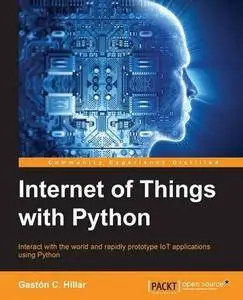Gastón C. Hillar, "Internet of Things with Python"
English | ISBN: 1785881388 | 2016 | PDF/EPUB/MOBI | 373 pages | 9 MB/21 MB/30 MB
English | ISBN: 1785881388 | 2016 | PDF/EPUB/MOBI | 373 pages | 9 MB/21 MB/30 MB
Key Features
Rapidly prototype even complex IoT applications with Python and put them to practical use
Enhance your IoT skills with the most up-to-date applicability in the field of wearable tech, smart environments, and home automation
Interact with hardware, sensors, and actuators and control your DIY IoT projects through Python
Book Description
Internet of Things (IoT) is revolutionizing the way devices/things interact with each other. And when you have IoT with Python on your side, you'll be able to build interactive objects and design them.
This book lets you stay at the forefront of cutting-edge research on IoT. We'll open up the possibilities using tools that enable you to interact with the world, such as Intel Galileo Gen 2, sensors, and other hardware. You will learn how to read, write, and convert digital values to generate analog output by programming Pulse Width Modulation (PWM) in Python. You will get familiar with the complex communication system included in the board, so you can interact with any shield, actuator, or sensor.
Later on, you will not only see how to work with data received from the sensors, but also perform actions by sending them to a specific shield. You'll be able to connect your IoT device to the entire world, by integrating WiFi, Bluetooth, and Internet settings. With everything ready, you will see how to work in real time on your IoT device using the MQTT protocol in python.
By the end of the book, you will be able to develop IoT prototypes with Python, libraries, and tools.
What you will learn
Prototype and develop IoT solutions from scratch with Python as the programming language
Develop IoT projects with Intel Galileo Gen 2 board along with Python
Work with the different components included in the boards using Python and the MRAA library
Interact with sensors, actuators, and shields
Work with UART and local storage
Interact with any electronic device that supports the I2C bus
Allow mobile devices to interact with the board
Work with real-time IoT and cloud services
Understand Big Data and IoT analytics



